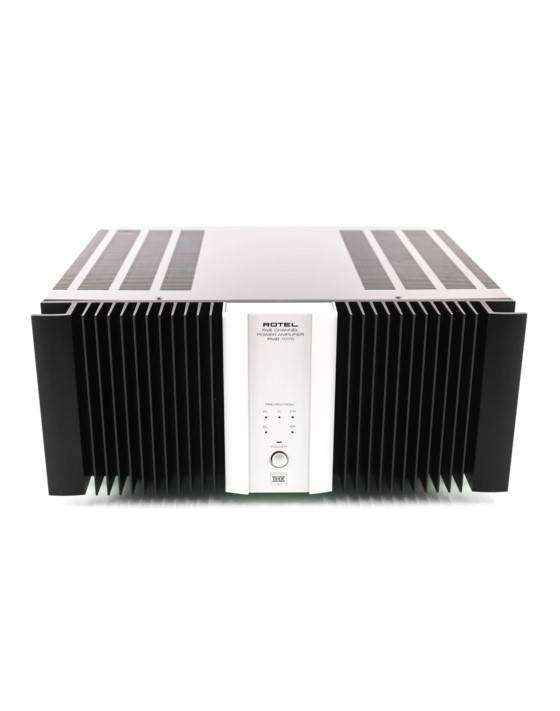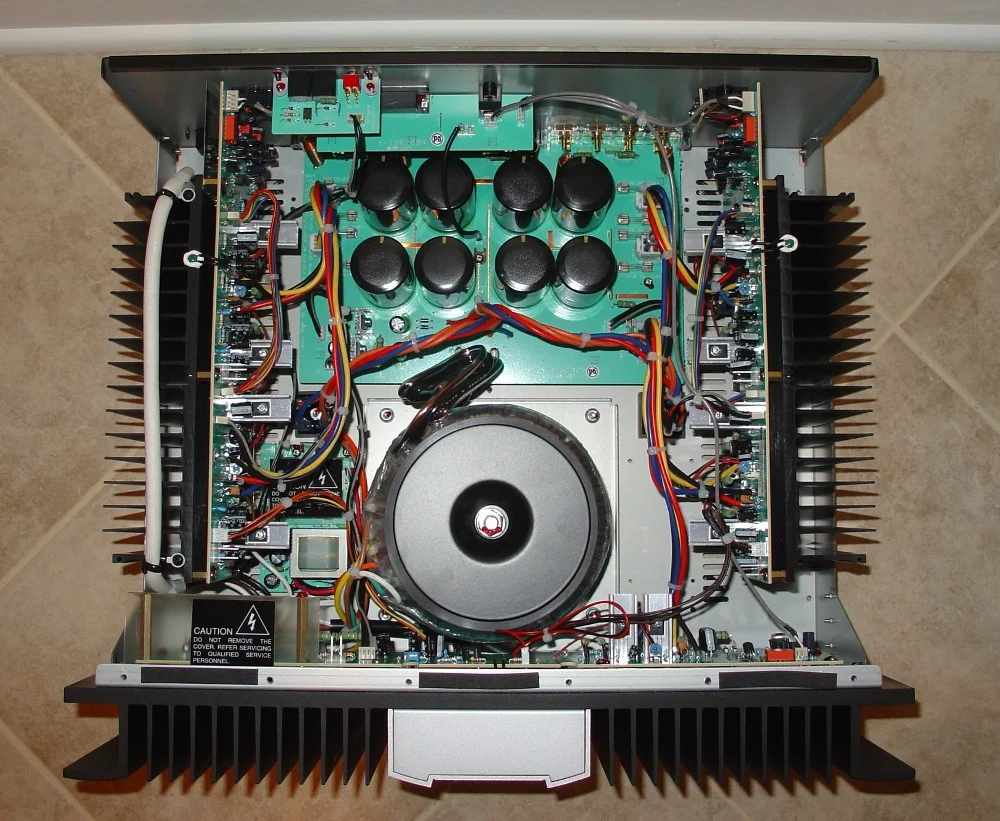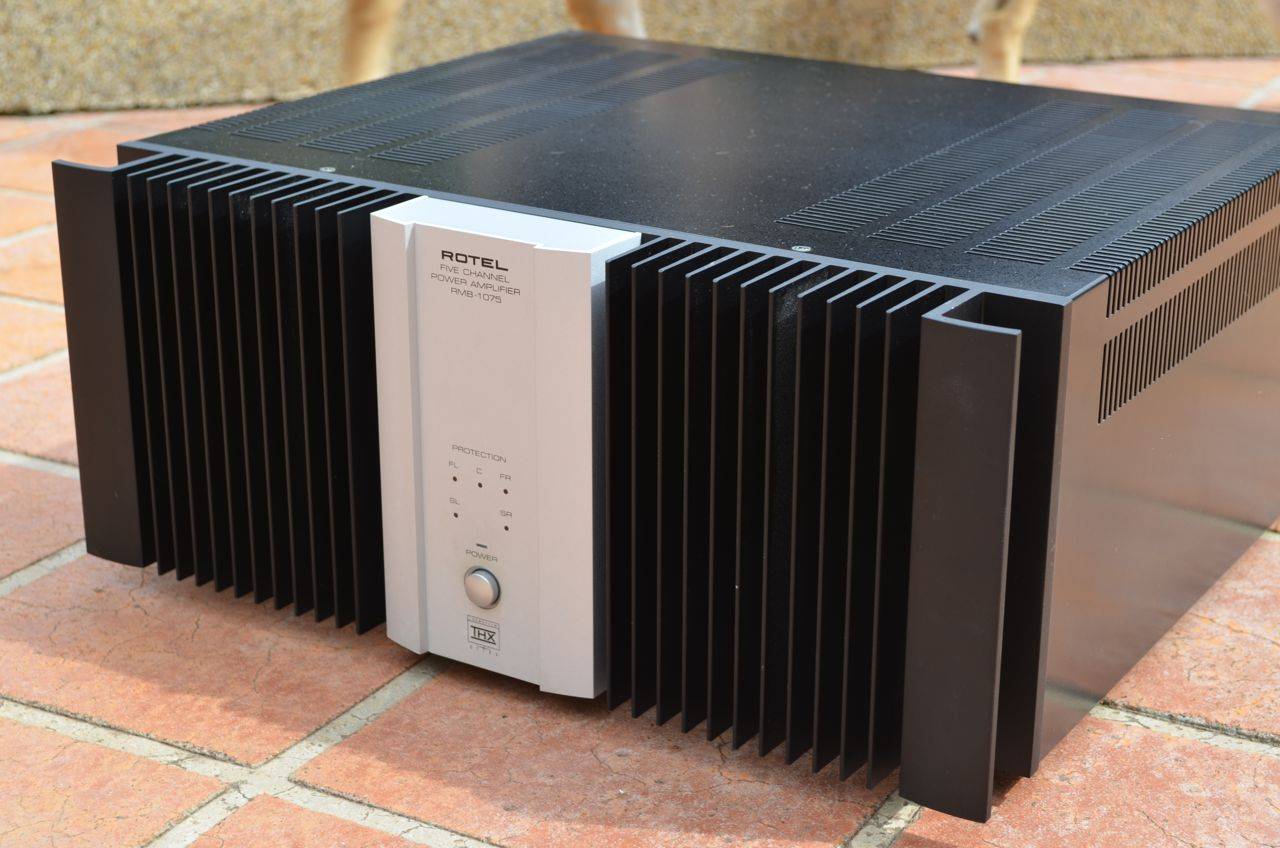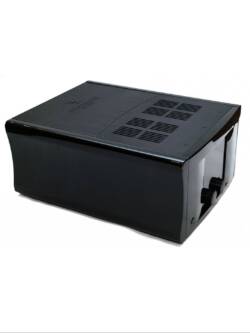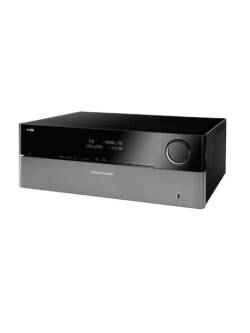Rotel RMB-1075 5ch Amplifier
Original price was: R55,000.00.R15,000.00Current price is: R15,000.00.
We at SGHT are no strangers to Rotel products. In the October 2000 issue, Michael Fremer reviewed Rotel’s RTC-965 surround processor/tuner with the RB-985 Mk.II power amplifier, and in February 2001, Robert Deutsch waxed enthusiastic about the RMB-1095 power amp. Both writers lauded these products’ value, and RD spoke of Rotel’s consistency in product and circuit design, something he’d noticed through the years. He declared the RMB-1095 “one of the best buys in a multichannel amplifier.”

Rotel might have taken that as a challenge. I won’t say that the RMB-1075 is the best thing to happen to amplification since Bardeen, Shockley, and Brattain knocked their heads together at Bell Labs inventing the transistor, but as far as practical value is concerned, the RMB-1095’s little brother would certainly have made those men proud of what their little electronic switching creation has made possible.
Physical Description
There’s no mistaking the RMB-1075’s membership in the Rotel family. It’s THX-certified, and its front panel is covered with the same vertical heatsinking as its brothers, although its increased cooling area is one of the ways the RMB-1075 is an improvement over the now-discontinued RB-985 Mk.II. These fins did their job during all of my listening sessions; the RMB-1075 was never more than slightly warm to the touch. The center of the front panel sports the same solitary Power button as other Rotel amps. Above it are five LEDs that light up if any of the amp’s five channels are forced into protection mode.
The relatively compact RMB-1075 is smaller than any other amplifier I currently have in my studio, and, at a mere 43 lbs, the most manageable. But while small in stature, it couldn’t be called a lightweight—like that weight-lifting boy who used to show up in all our comic books, the RMB-1075 had strengths that belied its size.
A quick comparison of the RMB-1075’s internal parts shows how Rotel made this less expensive version of their RMB-1095. The RMB-1075 uses only one 1.5kVA toroidal transformer instead of the RMB-1095’s two 1.2kVA devices. The power supply includes eight 10,000µF slit-foil capacitors, vs. eight 22,000µf devices in the larger, more powerful amp. The output amplification comprises twenty 130W/15-amp transistors, down from the larger unit’s thirty 150W/15-amp devices.
Audio Pro Sessions
I noted in my review of the Audio Pro Black Diamond (October 2001) that the combination of that Swedish speaker with the Rotel RMB-1075 was a good one. The Black Diamond’s minimal crossover allowed the RMB-1075’s controlled performance to sing through without restriction, and the speaker’s above-average efficiency made the most of the Rotel’s power output. Dynamic transients had proper attack, and front-to-rear soundstage layering was precise. Film soundtracks sounded eerily live.
The Black Diamonds are unforgiving of harsh or strident electronics, and the RMB-1075’s smooth performance proved a heavenly match. I had switched to the RMB-1075 after packing up the 7-channel Integra Research RDA-7 amplifier to send it to our Home Entertainment 2001 show in New York, and was slightly bummed that the Rotel had only five channels. After a few listening sessions, I wired a second set of monopole rears in parallel for a more enveloping surround “bubble.”
The RMB-1075 didn’t complain about this extra load for days. Then, walking through my studio one night, I tripped on a speaker wire, possibly shorting it out. Later, I noticed that one of the amp’s protection LEDs had lit up. I removed the cover, found a blown fuse, and replaced it. But the replacement’s instant demise in a bright flash proved that the wound was deep.
Rotel quickly sent another unit, and my evaluation continued—all speaker cables now safely affixed to the floor with wide black gaffer’s tape. When I talked with Rotel’s service department, we couldn’t decide exactly which part of my stupidity had caused the problem: the possible short, or my having wired the speakers in parallel, which presented a load to the amp lower than it should be asked to handle. Please learn from my mistake—this is only the second amp I can remember having blown up.
B&W Sessions
Lingering in Tom Norton’s review queue were the B&W CDM-1NT monitors and CDM-CNT center-channel—the entry speakers in B&W’s CDM series. I borrowed them because I wanted to see how the Rotel RMB-1075 might handle a load slightly less efficient than the Audio Pro Black Diamonds.
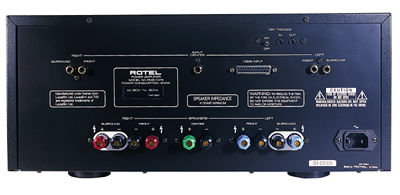
The RMB-1075 lit up the B&Ws as it had the Audio Pros: The sound was no-nonsense accurate, with dynamics to spare. The combination had the character of Joe Friday—just the facts—and led to some seriously enjoyable music investigation.
But the RMB-1075 didn’t just deliver the goods—it had a major-league windup. I didn’t get only the transients, but sensed their delivery in a way that made the actual sound more thorough—drum rim-shots and bass-guitar plucks had palpable presence. Everything was rendered with a matter-of-fact solidity that I sometimes found startling.
All Amps Sound the Same?
I compared the Rotel RMB-1075 with two other amplifiers: Theta Digital’s Dreadnaught and B&K’s AV6000. And because the output level of the Integra Research RDC-7 surround processor can be adjusted in increments of 0.5dB, I was able to get the playback levels quite close at 1kHz, as measured with the Goldline DSP-30 Real Time acoustic analyzer.
I switched between the Rotel and the Theta Dreadnaught to see what’s available at four times the price and nearly twice the rated power. The Theta had better extension at the frequency extremes, and smoothed out vocal sibilance—those high-frequency s and t sounds so often “enhanced” on pop recordings. Jennifer Warnes’ Hunter (CD, Private Music B00002487W) exhibited the differences plainly: The upper highs of her voice on “Somewhere, Somebody” were less harsh through the Theta, but the Rotel was not so bad as to drive me to the power switch. The RMB-1075 also added a slight sheen or glare to her voice. In addition, the Theta’s bass had a firmness that could not be matched by the less powerful Rotel. On “Way Down Deep,” the bass line in the midst of some extremely close-miked bongos proved that the RMB-1075 was no match for the Dreadnaught. I didn’t exactly expect the little guy to hang with the Theta monster, but it was good to hear the differences that quadruple the cash can buy.
I then dug out my old B&K AV6000 amp (1999 price for the slightly newer AV6000 Series II: $1498), to compare the RMB-1075 to something a bit closer to its price range. Sure enough, the overall sonic characters of the two amps were more similar than in the previous comparison, but each retained its own signature. The B&K presented a soundstage larger in both width and depth; it blended the music pleasantly, creating a continuity of sound that filled the space between the speakers. The Rotel was more forward with everything, but more distinct as well—each performer was surrounded by a bit more breathing space. I could live happily with either one.
Conclusion
The RMB-1075 is a competent performer with qualities of build and sound that belie its low price. More money will buy you extension at both frequency extremes, but for reasonably priced speakers in the average listening space, this amp is a winner. It’s another of Rotel’s best buys in multichannel amplifiers, and one of the best buys in this category, period. Highly recommended.
Description
Specifications
RMB-1075 5-channel, THX power amplifier
Frequency response: 10Hz-80kHz, ±0.05dB
Continuous power output: 120Wpc into 8ohms, 20Hz-20kHz
Speaker impedance: 4ohms minimum
Input impedance/sensitivity:33kohms/1.5V
Signal/noise: 115dB, A-weighted
Total harmonic distortion: <0.03%, 20Hz-20kHz
Intermodulation distortion: <0.05%
Dimensions: 1615/16″ x 71/8″ x 15″ (WxHxD)
Weight: 43 lbs
Price: $1199
